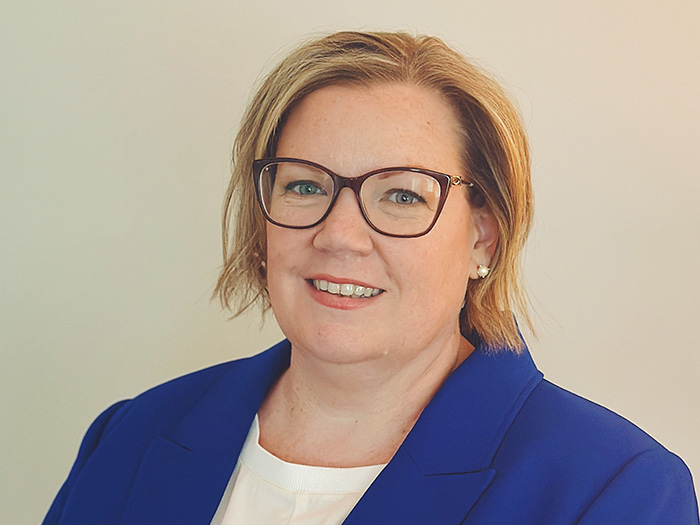4 Steps to Make Risk Management a Bridge to Business Success
In the complex landscape of middle market business operations, risk management stands as a watch guard, protecting employees and organizations from the unforeseen and the preventable. Yet, despite its pivotal role, risk management is an area that many leaders still don’t think about as a key performance metric for a productive and healthy business. Instead, a robust and effective safety program often goes unrecognized and underappreciated.
Risk management professionals deal with this challenge regularly.
So, how can we make an “ah-ha” connection with leadership to better demonstrate the value of safety efforts and catalyze real change within the commercial operations we serve? It starts with learning what drives your client day-in and day-out.
For me, it was firsthand experience that led me to a 32-year safety career. In 1968, my father was killed in an industrial explosion, leaving my pregnant mother and two sisters to face the world alone. I was fortunate to have an incredible support system growing up, but the impacts this accident had outside of the workplace — with my family and community — are a big part of why the occupational safety major struck a chord with me in college. It’s more than just protecting the company and preventing accidents; it’s about sending workers back home the same way they came in each day and shielding their families from the negative impacts — something my own family has experienced.
Every risk manager and safety professional has their horror stories, but using those experiences and expertise to capture and retain clients’ attention is how we really make a difference.
1) The Value of Connection
I coach my team of loss control experts across the U.S. to begin every new relationship with a personal connection — try to find commonality with the professional you’re meeting with, whether it be context from pictures or décor in their office or something you learn about them through conversation. Simple, yes, but this goes a long way in gaining their interest and acceptance.
Next, demonstrate your preparation and credibility. The ability to walk into a meeting or site visit and speak the language of the industry and company, to show genuine understanding and insight into their specific risks, sets the stage for meaningful engagement. It’s the difference between being another “insurance rep” and being a trusted advisor.
We completed a presurvey at a metal fabricator in Illinois with roughly five acres of indoor plant space. Following our tour of the facility, we were introduced to the company’s president for a debrief, during which we emphasized the importance of enhancing its business continuity planning due to the increased risk for strong storms in the area.
The president smiled, walked our expert to the window and pointed to a row of houses within 1,500 feet of his office that were destroyed by a tornado three years earlier. He knew they’d skirted a potential disaster and appreciated our thoughtful analysis and insight into how to make them more resilient for future events. Now they’re a happy client.
2) Understanding ‘What’s in it for me?’
Every leader asks this question, consciously or not. Why should they invest more time and resources into risk management? How does this move their business forward? What’s in it for me (WIIFM)?
Once you’ve made a personal connection with the client and know what’s important to them, aligning risk management strategies with the company’s priorities — be it return on investment, operational efficiency, loss trends, or increased profits — ensures that the conversation is not just heard but heeded.
It’s about integrating their concerns into a risk management strategy that speaks directly to their interests. Focusing on the client’s WIIFM not only secures buy-in but also fosters a commitment to follow through with the recommended strategies.
This past November, we conducted a site visit with an account that led to several critical exposure concerns. During our time together, the company representatives also expressed frustrations with the number of tickets their drivers were receiving.
After hearing this, we took the time to teach the company’s management team how to better utilize their existing telematics technology to coach and improve driver behavior. The client expressed their gratitude and immediately got to work on our exposure concerns. Six months later, they’ve taken care of our concerns and continually seek our guidance on fine tuning their risk management programs.
3) Industry Specialization
More and more customers are looking for insurance and risk management partners that are entrenched in their specific sectors and understand the unique risks they face.
This is the essence of what it means to be a specialized carrier — having the right people in the conversation, individuals who comprehend the nuances of the industry and can offer tangible examples and lessons learned.
4) Get Creative
Innovation is at the heart of progress, and risk management is no exception.
Many carriers can make recommendations to improve an account’s risk profile, but most don’t take the time to consider the costs, resources and time requirements involved with completing the recommendations. This is where we’ve found that it is beneficial to provide options when it comes to risk mitigation.
Risk management experts, through creative thinking and an out-of-the-box approach, frequently discover simpler and more cost-effective methods for clients to achieve the same desired outcome. This not only saves time and money but also highlights the value of adaptive thinking.
Driving Home the Message
Effective risk management extends beyond mere policies and procedures. It lies in our capacity to connect the abstract with the personal, turning statistical data into compelling narratives that motivate action.
When a construction employee on a jobsite we insure fell from a roof while working near a leading edge last year, it was the safety program that turned a potential tragedy into a near miss. That day, an employee went home to his family, unharmed, because of the measures we championed and the buy-in we were able to achieve.
By emphasizing personal connection and tailored strategies, we can elevate the importance of risk management and foster a culture of safety that benefits everyone involved. &










